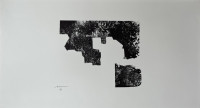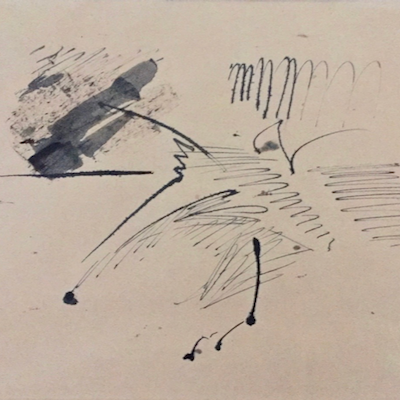
Details
Artist
Styles
Unique work - Signed at the back // Eduardo Chillida's Felicidades (1966) is a limited edition monotype measuring 5.5 x 9 cm, showcasing his minimalist approach to form and space. The piece, created using delicate black lines on a light background, evokes organic, branching shapes that appear to emerge and grow across the surface. The simplicity of the composition highlights the tension and balance between the lines, suggesting movement and an exploration of spatial dynamics. This intimate, small-scale work emphasizes Chillida’s mastery in using minimal elements to convey a sense of structure and natural form.
Felicidades, 1966
form
Medium
Size
5.5 x 9 cm
- Inches
- Centimeters
Edition
Price
- USD
- EUR
- GBP
Details
Artist
Styles
Unique work - Signed at the back // Eduardo Chillida's Felicidades (1966) is a limited edition monotype measuring 5.5 x 9 cm, showcasing his minimalist approach to form and space. The piece, created using delicate black lines on a light background, evokes organic, branching shapes that appear to emerge and grow across the surface. The simplicity of the composition highlights the tension and balance between the lines, suggesting movement and an exploration of spatial dynamics. This intimate, small-scale work emphasizes Chillida’s mastery in using minimal elements to convey a sense of structure and natural form.
- Recently Added
- Price (low-high )
- Price (high-low )
- Year (low-high )
- Year (high-low )
Eduardo Chillida
Literature Or Life (Esku XXXV, Hebrew Version), 1997
Limited Edition Print
Etching
EUR 3,600
Eduardo Chillida
Une Helene De Vent Ou Fumee I, 1990
Limited Edition Print
Etching And Aquatint
EUR 8,150
Eduardo Chillida
Une Helene De Vent Ou Fumee II, 1990
Limited Edition Print
Etching And Aquatint
EUR 8,150
Eduardo Chillida
Une Helene De Vent Ou Fumee III, 1990
Limited Edition Print
Etching And Aquatint
EUR 8,150
What is Art Informel?
Art Informel is a French term referring to the gestural and improvisational techniques common in abstract painting during the 1940s and 50s. It encompasses various styles that dominated these decades, characterized by informal, spontaneous methods. Artists used this term to describe approaches that moved away from traditional structures and embraced more expressive, unstructured techniques.





















































